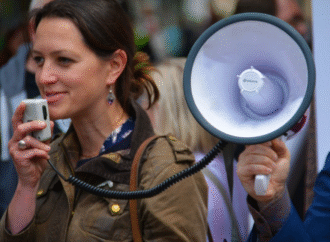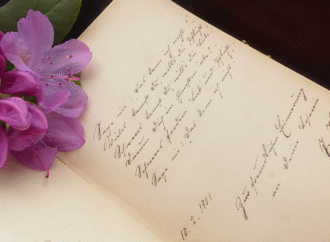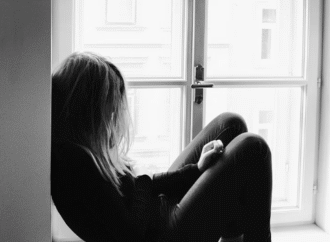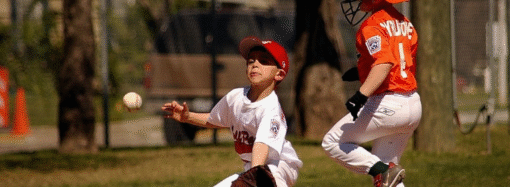I recently visited Ireland, and amidst the rugged moors covered in gorse bushes and the patchworked sheep fields divided by hedges, family farms once dotted the landscape as a cornerstone of the country. Ireland was, at one point, a country rooted in its traditions—from these farms to a strong Catholic faith.
In turn, the role of such family farms and Catholicism shaped the country, and while much has changed over the past few decades, as I wrote in a previous article on my Ireland trip, “a look at traditional Irish culture and its remnants offers valuable insights into our own country and its current culture wars.”
The central role of small family farms in Ireland traditionally fostered localism and domestic life, which, I would argue, are central ingredients in healthy culture. Farming families must, by necessity, stay close to home. The cows have to be milked each day, the fences mended, the chickens fed—there can be no long absences. And for most of Ireland’s history, travel would have been difficult and dangerous anyway.
Traditional farming families worked together, building family bonds and bonds to the home, which was also the place of work. This stability of families and homes could allow for true, lifelong friendships (and feuds!) to develop between families as well.
This, no doubt, is the origin of the famous Irish pubs—what is a fisherman or a farmer going to do for entertainment after a long day of work, especially before the era of television and the internet? Have a pint with the lads—and maybe bring the family along for some singing and dancing. I think what gives Irish pubs much of their charm is that they were once the nexus of true human community, bringing together family and friends and music and laughter (and arguments, too) and the fruits of the harvest. And each pub was unique, colored by the people, materials, and landscape that shaped it. All of this—the family farm, the local pub, the parish church—creates a rootedness in and loyalty to place that we would hardly recognize in America, which is a country of nomads.
Wendell Berry has explored this theme extensively in his book The Unsettling of America where he details the way that we lost this kind of localized rural culture through the introduction of Big Agriculture and the industrialization of farming. My trip to Ireland showed me just how much America missed out on with the mass migrations to the big cities.
But it’s not just America. Ireland has largely lost this rural, localized culture as well. The remnants are there—more obviously than over here in the U.S.—but they are fading and crumbling, like the old castles that mark so many hilltops. One local we spoke to near the town of Dingle on the southwestern tip of the country described the economic and cultural change that has come to that area. In the past, he said, most people in and around Dingle made their living from fishing or sheep farming. But the Irish government sold the waters to foreign countries, and these big, corporate fishing trawlers have taken the work from the local Irish fishermen.
Recent cuts in quotas due to European Union trade deals have exacerbated the decline in the fishing industry. A local farmer described the increasing difficulty of making any money with farming as regulations continue to pile on (he told us, for example, that regulations forbid farmers from butchering their own animals). Now, Dingle’s economy runs primarily on tourism. But tourism is an artificial kind of economy, and it creates an artificial culture where every participant is temporary and unacquainted with every other, the very opposite of rootedness, authenticity, and community.
If Ireland’s connection to the land is loosening, so too is its rootedness to the other great influence on its history: religion. Once considered among the most Catholic countries in the world, Ireland’s faith is speedily declining. Weekly Mass attendance stood at 91 percent as recently as 1975. In 2016, it had fallen to 36 percent. And when Masses began again after COVID shutdowns, regular attendance dropped further to 27 percent. Anecdotally, at one Mass we happened upon while strolling through Dublin, all the attendees appeared to be north of 60 years old. The average age of a priest in Ireland is now 70. The knot holding together religion, agriculture, and culture is unravelling.
What I experienced in Ireland was this: the remnants of a once glorious, luminous, truly human and humane culture, like the ruins of the monastery at Glendalough I wandered through. But what was once there, and what, to a degree, remains, had such poignancy that the vision holds me still, and I believe people in the United States and around the world can learn from and profit by it in this age of increasing polarization, disconnection, and dissipation of society.
—
Image credit: Photograph by Blaire Pronschinske, provided by author, and used with permission.
2 comments
















2 Comments
Walter
July 10, 2023, 6:03 pmSince this article doesn't even mention a Protestant presence in Ireland, I have to assume this is a propaganda piece for the Roman Catholic Church.
REPLYHugh E. Brennan
July 10, 2023, 9:13 pmAnd, as a result, the Irish birthrate is now 1.4 per woman. Far below the replacement rate. The government has declared the country open to virtually unlimited immigration. It is plain to see that not just the culture and religion but the Irish themselves will soon be absent from their famous landscape.
REPLY